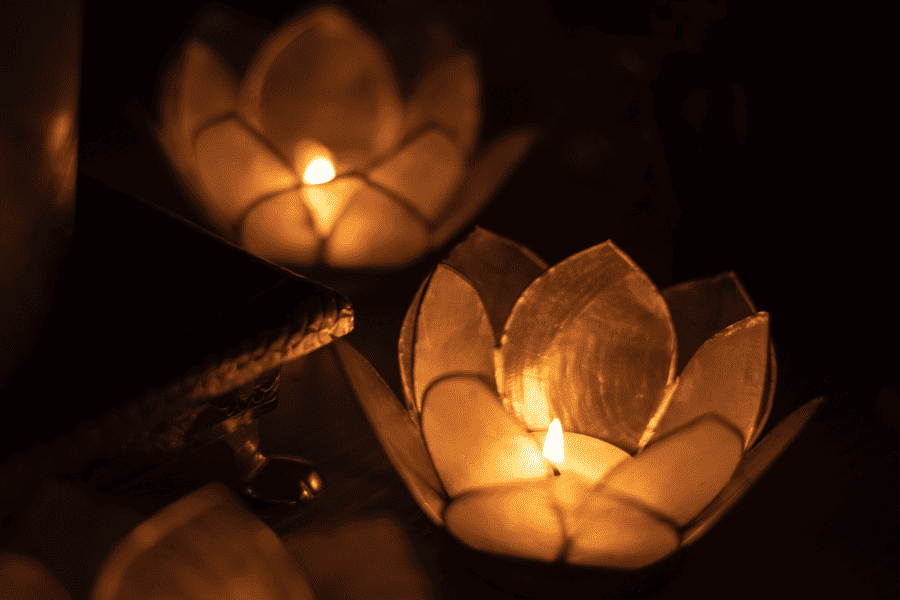Celebrating the Solstice with Sacred Ritual

By Melissa Moore
“May this Winter Solstice season bring peace, love, and relaxation.
We wish you a good book to read, a blanket to keep you warm,
a hot drink in your cup, and friends with whom to weather any storm.”
~ Otherworldly Oracle
This article is related to an event. Click here to learn more.
We need to bring light and insight into the darkest hours of the year, light to turn the page, light to move forward, and heart light to bring cheerfulness into the darkest time of year. Humans have marked this annual transition from dark to light since time immemorial. Nowadays, when we ritually observe and celebrate the Winter Solstice, we connect to what is ancient in us as human beings.
We may tap an embodied memory when we move ritually in tune with the seasonal changes.
Winter and Summer Solstice rituals are cross-culturally known to human beings worldwide. One could imagine they abide in our DNA as a species, consciously or unconsciously; there is an impulse to mark these significant annual dark-to-light and light-to-dark transitions.
Creating Rituals to Acknowledge Transitions
Karuna Training explores how rituals help us embody and acknowledge substantial events and life transitions. Through ritual, we learn to commune directly and energetically with the invisible elemental forces and tune into the world's seasonal significance and greater wisdom.
Through ritual, we bind ourselves to reality through our body, speech, and mind. The Body - is the embodied action, the actual act or rite of the ritual. The speech aspect is the feelings stirred and invoked by the rituals. Rituals allow our voice to be heard, and we speak directly to the invisible forces - taking back our human capacity and power to commune directly with the sacred. The mind holds the intention we set for our rituals; with clarity on what we aspire toward, we are more likely to magnetize whatever we desire.
Both conscious and unconscious rituals are essential to human psychological health and sanity. A ritual here does not necessarily mean following an official rite or a prescribed religious ceremony; we can discover all kinds of rituals. When speaking of ‘sacred ritual, we acknowledge the freedom to create and amalgamate whatever we care to incorporate, as humans have done for eons, in creating a meaningful ritual for oneself. Mundane rituals can be as everyday as making our tea, relating to our phone, greeting our partner or children, calling our mothers weekly, etc. They are meaningful and essential to be intentional in one’s body, speech, and mind.
If we create rituals, we unconsciously enact them, usually through self-destructive or unsatisfying behaviors. In Contemplative Psychology, we understand destructive addictive behaviors, usually ritualized, arise out of separation toward the sacred. Sacred here refers to evoking an experience of the world and its wisdom, which is more significant than us but not separate from us. We are all seeking connection with that which feels more powerful than we are. We aspire to belong to someone, something, and the World. Even if we have renounced belonging and live in solitude- we’re in reaction or evolved away from our need to belong.
Evoking the sacred means learning to enact conscious rituals or create contained experiences that bring forward a sense of belonging to the greater whole. We can remember to mark significant transitions in the year with meaningful rituals that we amalgamate from our history and current values. Creating rituals or combining those familiar to us and those we love is an opportunity to evoke the sacred - to make the holiday season meaningful and personal to feel they belong to us and we to them.
When the sun is far away, we can supplicate the light to return, metaphorically, ‘What shadow areas do we wish to shine light in our lives?’It is courageous to invite light, which in Buddhism is synonymous with luminosity or appearances. We are bringing light into the shadow time of year, a shared collective turning point on the globe's Northern poles.